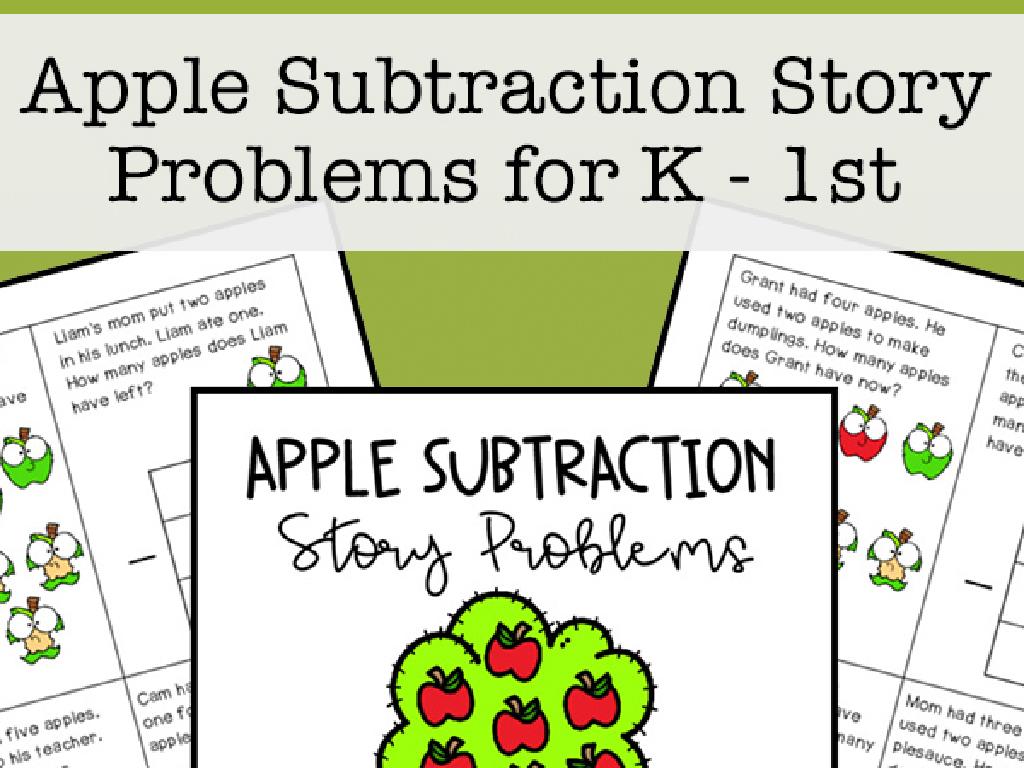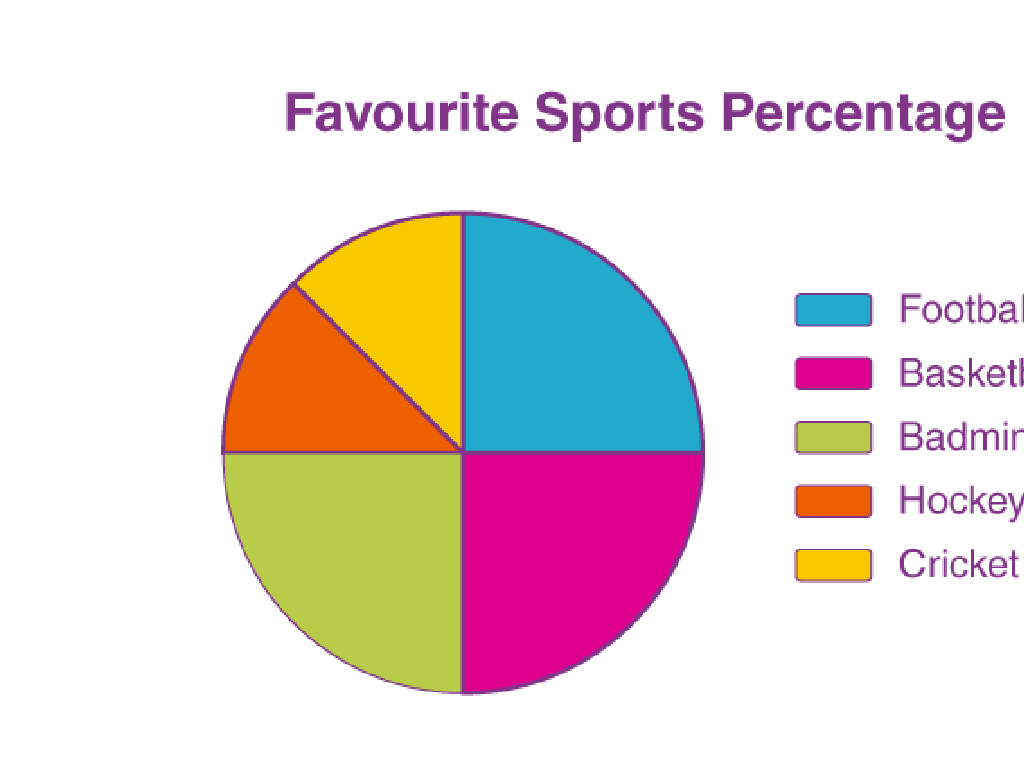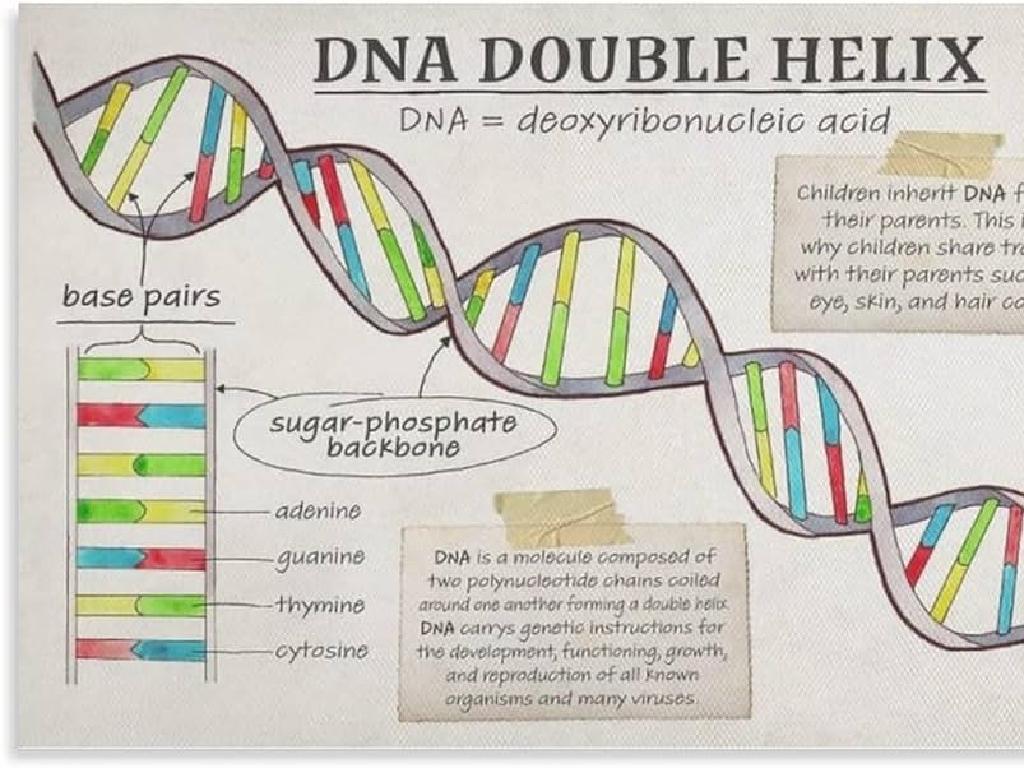Multiplication Facts For 6, 7, 8, And 9: True Or False?
Subject: Math
Grade: Third grade
Topic: Multiplication Fluency Up To 10
Please LOG IN to download the presentation. Access is available to registered users only.
View More Content
Welcome to Multiplication: Mastering Facts!
– Multiplication as groups of numbers
– Think of multiplication like adding groups: 3 groups of 2 is 3 x 2
– Explore facts for 6, 7, 8, and 9
– Let’s investigate the patterns in multiplying by 6, 7, 8, and 9
– True or False: Fact-checking time
– We’ll play a game to decide if our multiplication answers are true or false
– Multiplication: A math superpower
– Knowing how to multiply makes math problems easier and faster to solve
|
This slide introduces third graders to the concept of multiplication as a way of adding groups of numbers together. Start by explaining multiplication using relatable examples, such as combining groups of items. Then, focus on the multiplication facts for 6, 7, 8, and 9, which are often trickier for students. Engage the class with a true or false game to reinforce their understanding of these facts. Emphasize the importance of multiplication as a fundamental skill that simplifies many aspects of math, making calculations quicker and more efficient. Encourage students to practice these facts to build their fluency and confidence in math.
Warm-Up: Multiplication Quick Review
– Review multiplication up to 5
– Let’s recall our times tables for numbers 1 through 5.
– Partner practice: 3×4, 2×5, 5×5
– Work with a buddy to solve these problems.
– Share a multiplication fact
– Can you remember something special about multiplying numbers?
– Discuss why multiplication is useful
– Think about how multiplication helps us in daily life.
|
This slide is designed to warm up the students’ minds by reviewing multiplication facts they are already familiar with. Start by asking the students to recall the multiplication tables up to 5. Then, have them pair up to practice specific multiplication problems, which encourages collaborative learning. After the practice, engage the class by asking them to share one fact they remember about multiplication, such as ‘multiplication is repeated addition’ or ‘any number times one is itself.’ This reinforces their understanding and helps them feel more confident before moving on to more challenging multiplication facts. Lastly, facilitate a brief discussion on the importance of multiplication in everyday life, such as in calculating total cost, sharing equally, or understanding time. This real-world connection will help students see the value of what they’re learning.
Multiplication Facts for 6
– Counting in sixes
– Let’s chant together: 6, 12, 18, 24, …
– Visualizing 6 groups
– Imagine 6 baskets with apples, how many apples in total?
– Practice: 6 x 2, 6 x 3, 6 x 4
– Use your fingers or objects to multiply by 6
|
This slide is focused on teaching the multiplication facts for 6. Start by engaging the students in a rhythmic counting activity to help them memorize the 6 times table. Use a visual example such as 6 groups of apples to help them understand the concept of multiplication as repeated addition. For practice, have the students solve multiplication problems involving 6, such as 6 x 2, 6 x 3, and 6 x 4. Encourage them to use physical objects or their fingers to count in sixes, reinforcing the visual and tactile learning methods. The goal is to build their fluency in multiplication with the number 6 through interactive and visual means.
True or False: Multiplication Facts for 7
– Is 7 x 3 the same as 3 x 7?
– Yes, because of the commutative property of multiplication
– True or False: 7 x 5 is 40
– False, because 7 x 5 is actually 35
– Understanding commutative property
– Correcting false multiplication facts
– Let’s find and fix mistakes together
|
This slide is designed to test and reinforce the students’ understanding of multiplication facts for the number 7. The first question addresses the commutative property of multiplication, which states that numbers can be multiplied in any order and the result will be the same. The second statement is a common misconception and provides an opportunity to correct misunderstandings. Encourage students to explain why the statement is false and guide them to the correct answer. Use this slide to promote active participation by asking students to come to the board to demonstrate their understanding and to help their peers correct false facts. This activity will not only solidify their knowledge of multiplication facts but also enhance their critical thinking skills.
Exploring the 8 Times Table
– Understanding the power of 8
– Doubling a number and then doubling again gets us to 8 times that number!
– Group activity: Multiplying by 8
– Find 8 x 1, 8 x 2, 8 x 3 with friends
– Work together to calculate 8 x 1, 8 x 2, and 8 x 3.
– Share and discuss patterns observed
– Notice any repeating numbers or sequences?
|
This slide introduces the concept of the 8 times table to third-grade students. Start by explaining how multiplying by 8 can be seen as doubling a number three times (e.g., 1 doubled is 2, 2 doubled is 4, and 4 doubled is 8). For the group activity, students will work in small groups to find the products of 8 x 1, 8 x 2, and 8 x 3, using manipulatives or drawing arrays if needed. After the activity, bring the class together for a discussion to share the patterns they’ve noticed, such as even numbers or the sequence of the last digits. This will help them see the regularities in the 8 times table and make it easier to remember. The teacher should circulate during the activity to provide guidance and ensure participation.
The Magic of 9: Multiplication Tricks
– Learn the 9’s finger trick
– Use your fingers to multiply by 9
– Practice 9’s with a buddy
– Try 9 x 2, 9 x 3, and 9 x 4 together
– Spot the pattern in 9’s table
– Look for repeating patterns in the answers
– True or False: Test your skills
|
This slide is designed to engage third-grade students with the fascinating patterns found in the 9 times table. Start by teaching them the finger trick for multiplying by 9, which is a fun and interactive way to learn. Then, have them pair up to practice multiplying 9 by 2, 3, and 4, reinforcing their understanding through collaboration. Encourage the students to observe the patterns that emerge, such as the sum of the digits equaling 9 or the tens digit increasing while the ones digit decreases. Conclude with a true or false quiz to assess their grasp of the concept. This activity not only builds multiplication fluency but also fosters a sense of discovery and excitement in learning math.
True or False Multiplication Game
– Let’s play with multiplication facts!
– I’ll say a fact, you show true or false
– Ready, Set, Go: Challenge time!
– Is 6 x 7 = 42, 8 x 5 = 45, 9 x 6 = 54?
– Use your multiplication skills to decide if each fact is true or false.
|
This slide introduces a fun and interactive ‘True or False’ game to help students practice their multiplication facts for 6, 7, 8, and 9. The teacher will say a multiplication fact out loud, and the students will respond by showing a ‘true’ or ‘false’ card. For example, when the teacher says ‘6 x 7 is 42,’ students should show ‘true.’ When the teacher says ‘8 x 5 is 45,’ students should show ‘false’ because 8 x 5 is actually 40. And when the teacher says ‘9 x 6 is 54,’ students should show ‘true.’ This activity encourages active participation and helps reinforce the students’ fluency in multiplication. The teacher should prepare true/false cards in advance and ensure that each student has a set. After the game, discuss why some of the facts were false and correct the mistakes together.
Multiplication Bingo Time!
– Receive your Bingo card
– Listen for called out products
– Mark the matching multiplication fact
– Example: If I say ’42’, you could cover ‘6 x 7’
– Shout ‘Bingo!’ for five in a row
|
This interactive class activity is designed to help students practice and reinforce their multiplication facts for 6, 7, 8, and 9 in a fun and engaging way. Each student will receive a Bingo card filled with multiplication facts. As the teacher calls out different products, students must identify and mark the corresponding multiplication fact on their cards. The first student to get five correct facts in a row (horizontally, vertically, or diagonally) should shout ‘Bingo!’ The teacher will then check the student’s card for accuracy. This activity encourages quick recall of multiplication facts and provides a lively way to assess students’ fluency. Possible variations include playing for different patterns on the Bingo card or having students take turns calling out the products.
Great Work Today, Mathematicians!
– Congratulations on your hard work
– Homework: Multiplication Facts Worksheet
– Complete the worksheet on facts for 6, 7, 8, and 9
– Practice each fact for accuracy
– Check each fact to ensure it’s true or false
– Aim for fluency in multiplication
– Keep practicing to get faster and more confident
|
This slide is meant to congratulate the students on their efforts during the class and to remind them of the importance of practice for achieving fluency in multiplication. The homework assignment is a worksheet that focuses on the multiplication facts for 6, 7, 8, and 9, which will help reinforce the day’s lesson. Encourage the students to take their time with each problem to ensure accuracy before speed. Remind them that making mistakes is part of learning and that with consistent practice, they will become more confident and quick at recalling their multiplication facts. During the next class, consider starting with a brief review of the homework to address any common errors or misconceptions.





